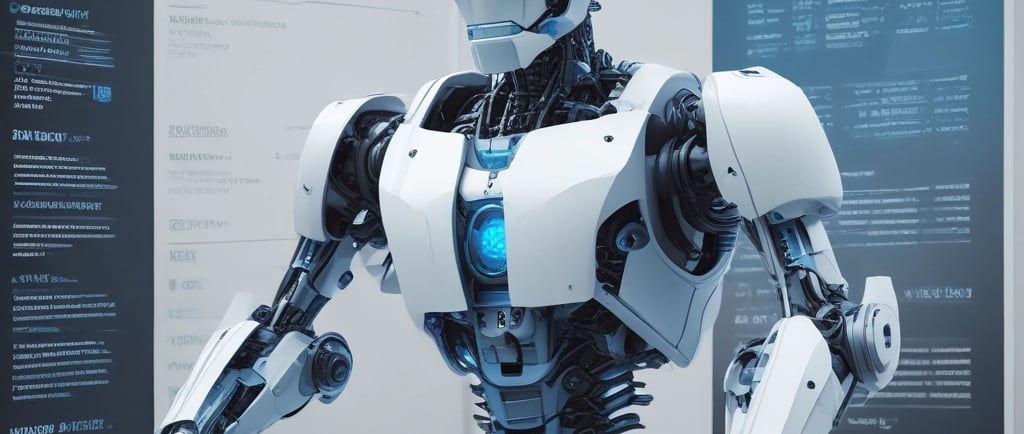AI-bots Build or Buy ?
PLGPRODUCT LED GROWTHAI AUTOMATION
10/17/20253 min read


Build vs. Buy in the Age of AI: How Product-Led Teams Can Use Technology to Drive Efficiency and Delight
Status:
This AI assistant initiative is under active development and is being built on the xxxx.com platform, with VISP-specific logic and integrations layered on top.
When I started leading the Product-Led Growth (PLG) transformation at VISP.net, our team had a bold vision — build an AI assistant that could onboard new ISPs faster, resolve tickets intelligently, and help reduce churn.
The idea was exciting. “Let’s build it ourselves,” we thought. But as we mapped infrastructure, model tuning, context storage, compliance, UI integration, and maintenance, one thing became clear:
Every hour spent building AI would pull engineers away from improving the core product experience.
That’s a common trap — confusing building AI with building value.
Pain Points & Vision
Our pain points were fundamentally about vision and focus:
How do we deliver a guided, high-trust onboarding and support experience without derailing our roadmap?
Our vision was clear:
Use AI to accelerate Time to First Value (TTFV), raise Customer Satisfaction (CSAT), and free our team to ship product enhancements that drive ISP growth and reduce churn.
Key Focus Areas
Clarity of vision: Own the experience and outcomes, not the plumbing.
Speed to value: Deliver results in weeks, not months.
Focus: Keep engineers on differentiators, not commodity infrastructure.
Trust: Enable sentiment-aware support and seamless human handoffs.
1. The Product-Led Lens: Efficiency as a Growth Lever
PLG isn’t about building more features — it’s about helping users achieve outcomes faster and with less friction.
At VISP, two pain points directly impacted our growth metrics:
Onboarding efficiency — guiding ISPs through complex data migration and setup.
Customer satisfaction (CSAT) — reducing repetitive support queries that drained our support team.
AI was the natural solution. But the question wasn’t whether we should use AI — it was how.
2. The Temptation to Build
The allure of “build” promises control and deep customization. In reality, building an AI system is a long-term commitment:
Continuous model updates and fine-tuning
Prompt optimization and hallucination testing
LLM cost and latency management
Compliance (DPA, SOC2, GDPR)
Integrations with ticketing, SSO, chat UI, and analytics systems
Building turns your product team into a mini AI research lab — and in a PLG environment, that’s dangerous.
Speed to value is everything.
3. The Smarter Path: Buy and Customize
We chose to build on xxxx.com, a proven conversational AI platform.
This gave us the best of both worlds:
Control the experience — branding, tone, logic, and data routing.
No wheel reinvention — infrastructure, training, and compliance already solved.
We focused on what mattered most for VISP:
Integration with RingCentral for agent alerts
Sync with Jira for ticket creation and tracking
Context persistence for 30-day onboarding journeys
Personalized greetings and sentiment-based live handoff to agents
Result: from concept to a working AI assistant in weeks, not months.
4. Build vs. Buy Framework for Product Teams
Speed to Market:
Build In-House → Slow — long development cycles
Buy / Partner → Fast — ready in weeks
Focus:
Build In-House → Pulls team off roadmap
Buy / Partner → Keeps team on differentiators
Customization:
Build In-House → Full, but costly
Buy / Partner → High with modular APIs
Maintenance:
Build In-House → Continuous burden
Buy / Partner → Vendor-managed
Innovation Speed:
Build In-House → Limited by bandwidth
Buy / Partner → Leverages vendor R&D
Data Ownership:
Build In-House → Full control
Buy / Partner → Managed via DPA / compliance
Cost Curve:
Build In-House → High upfront; lower later
Buy / Partner → Low upfront; subscription-based
Rule of thumb:
If the technology isn’t your competitive advantage — buy it.
If it defines your user experience — build it.
You don’t need to reinvent the AI engine. You just need to drive it better.
5. Case in Action: AI for PLG Efficiency
Once deployed, our AI assistant is to deliver visible impact:
Support load dropped as it handled repetitive queries (“How do I import subscribers?” “Why is my invoice stuck?”).
Onboarding satisfaction improved through step-by-step guided flows.
Engineering focus was protected, allowing the team to ship more revenue-impacting enhancements.
That’s the invisible ROI of “buy + customize” — vision preserved, momentum sustained.
6. The Strategic Mindset: Accelerate Value
PLG is not just what you build — it’s how you build.
Every AI layer should accelerate both Time to Value (TTV) for the customer and Focus to Impact (FTI) for the team.
Buying smart isn’t a shortcut. It’s a strategy for speed, scalability, and focus.
“Every line of code you don’t write is a week gained toward delivering user value.”
7. Quick Self-Check Before Building AI
Before you build the next AI tool, ask yourself:
✅ Does this capability directly drive our North Star Metric?
✅ Will building it delay our core roadmap?
✅ Do we have the expertise for ongoing optimization?
✅ Does this decision protect our vision and accelerate delight?
8. Closing Reflection
At VISP, being product-led meant owning the experience, not the plumbing.
By building on xxxx.com, we moved faster, improved customer satisfaction, and stayed aligned with our vision — all while the assistant continues under development.
In the AI era, the key question isn’t “Can we build this?”
It’s “Should we?”
Key Takeaway
Build what differentiates you. Buy what accelerates you.
That’s how product-led teams scale faster, serve better, and keep their vision front and center.
Enjoyed this article?
Visit Product-Led-Growth.com for more insights.
This assistant is under development on xxxx.com — connect with me on LinkedIn for updates.
